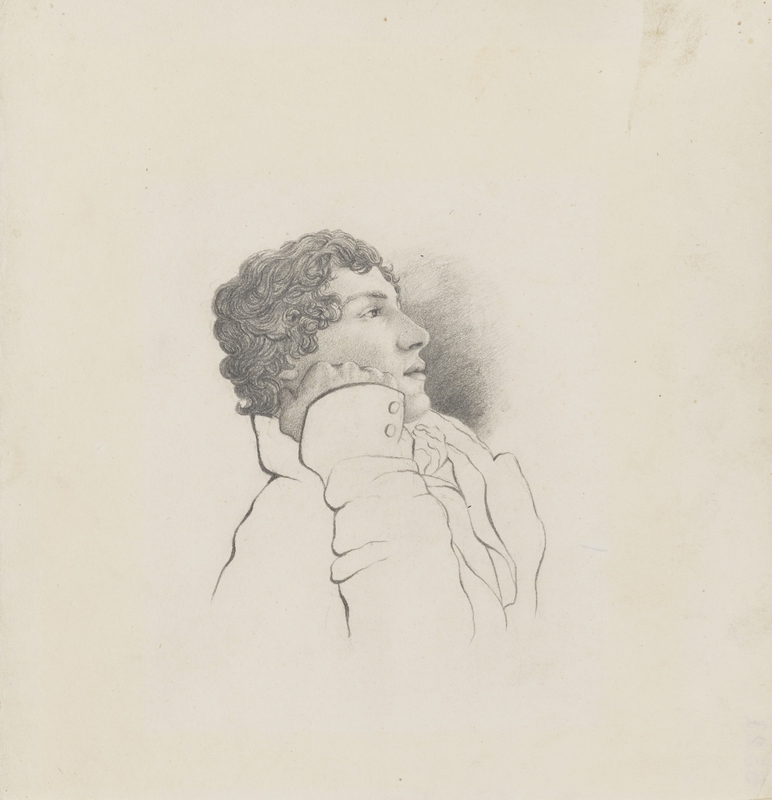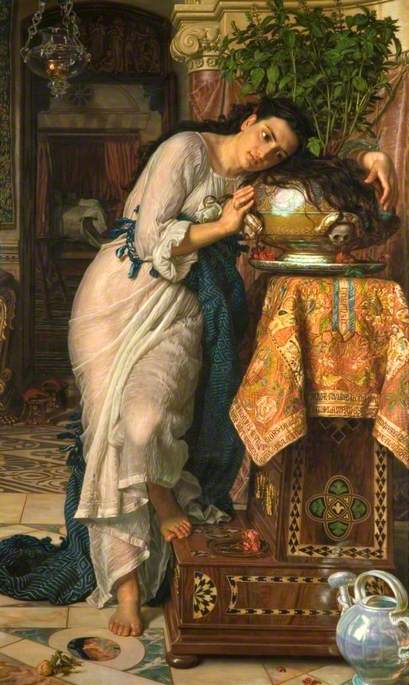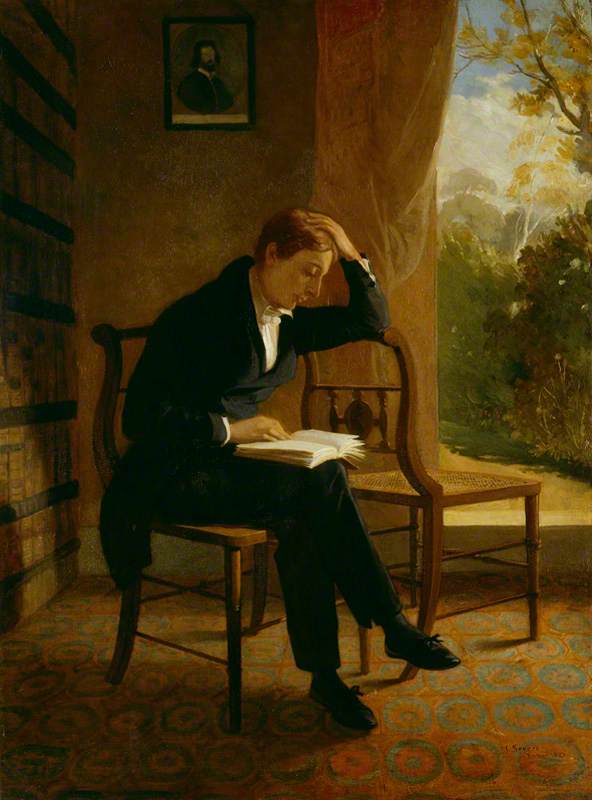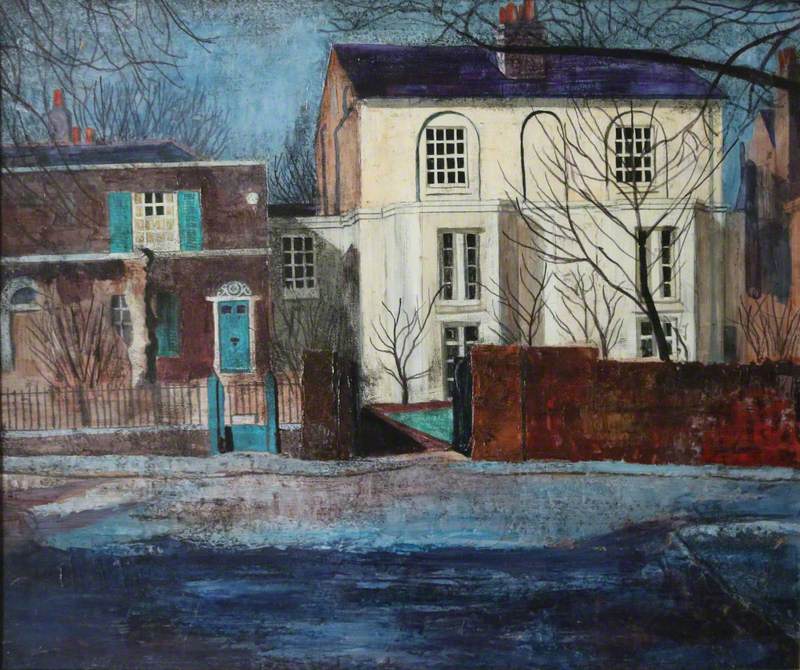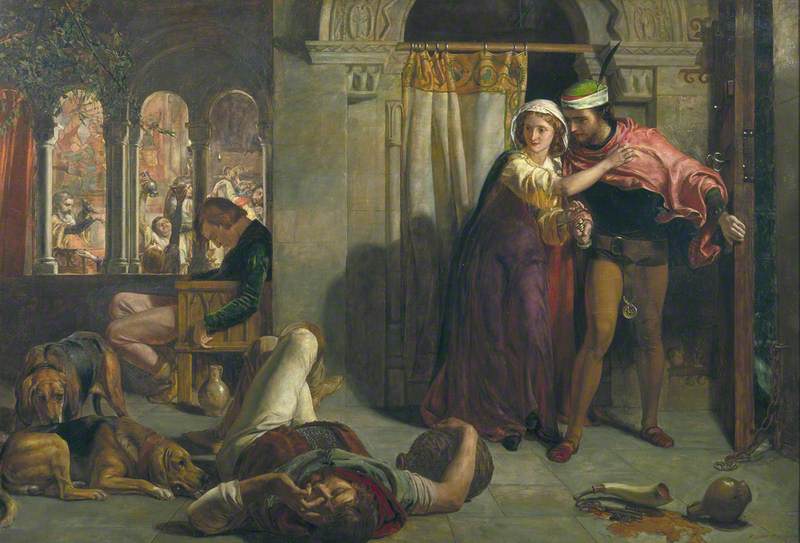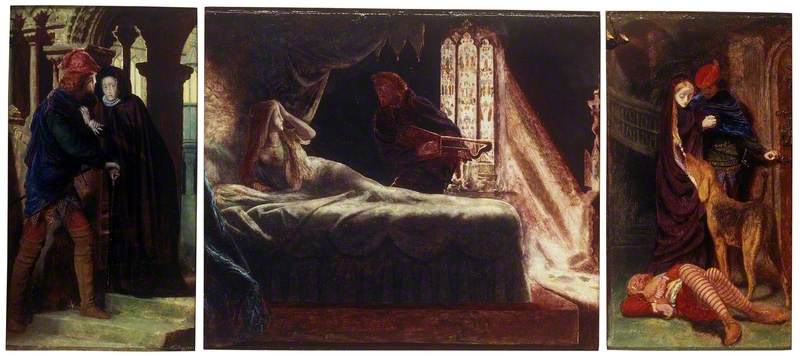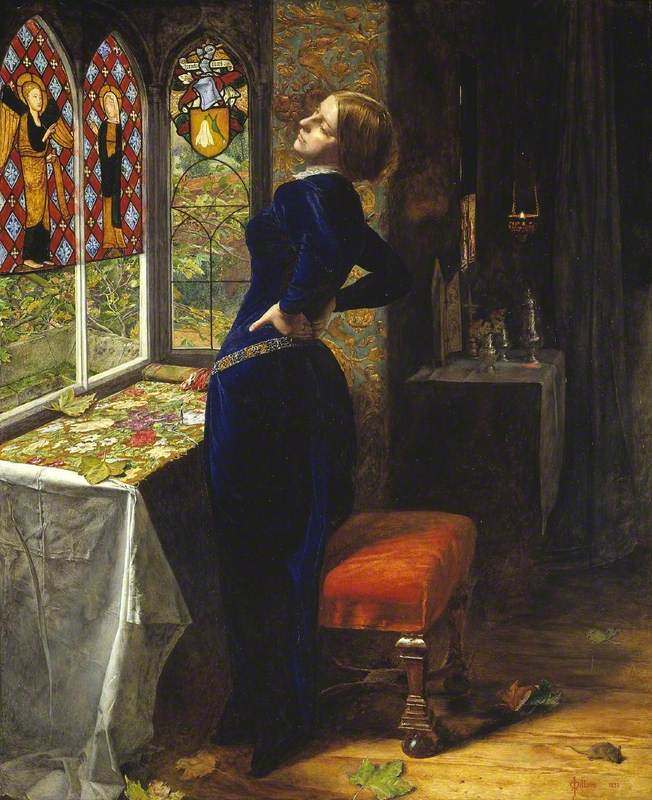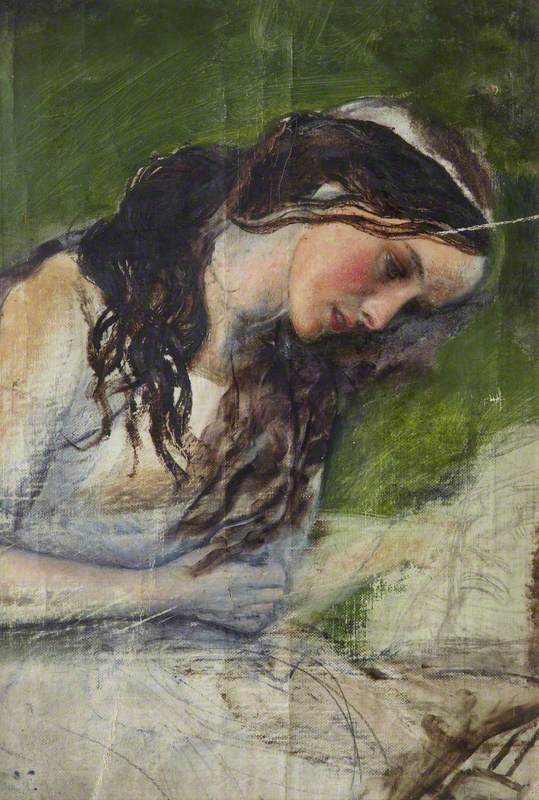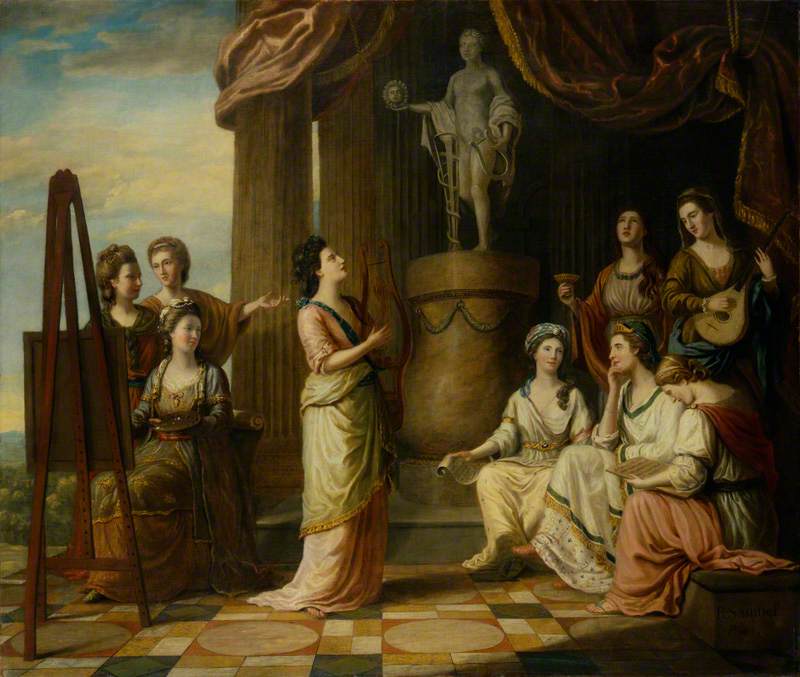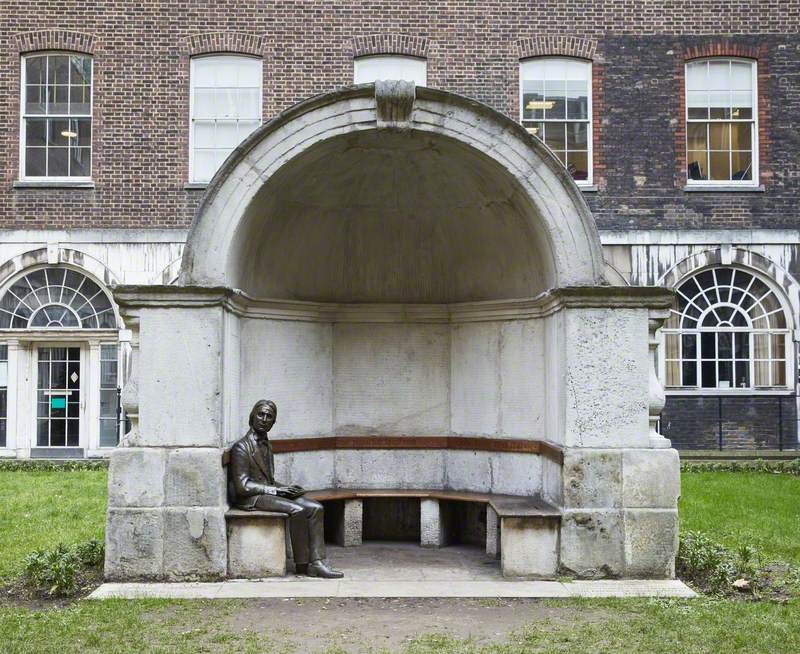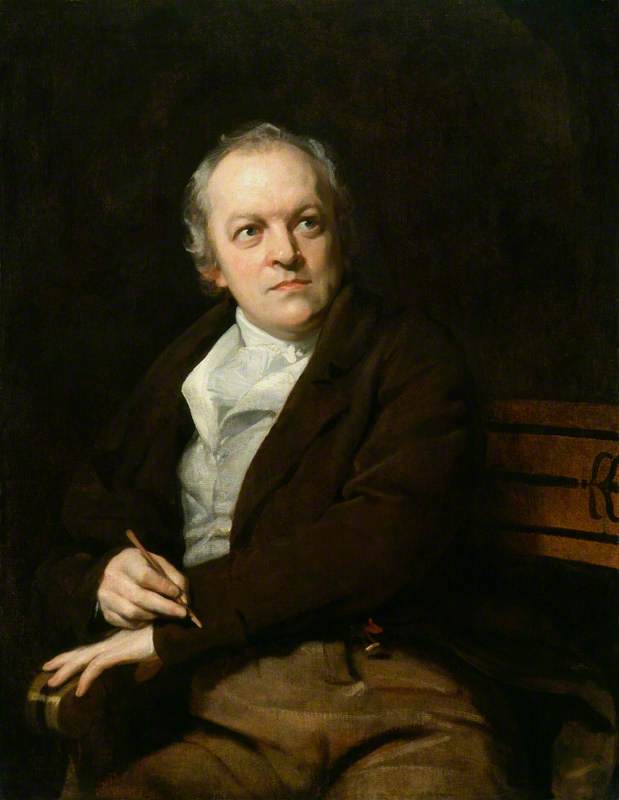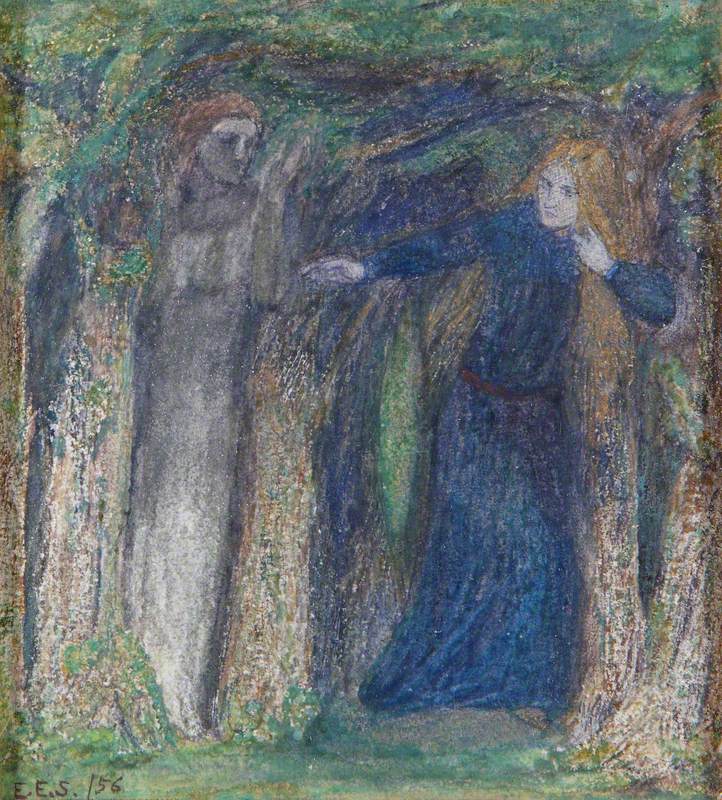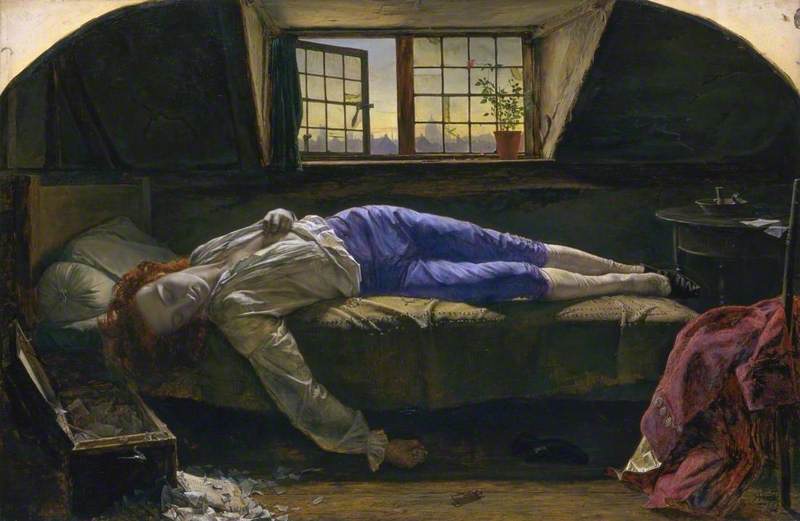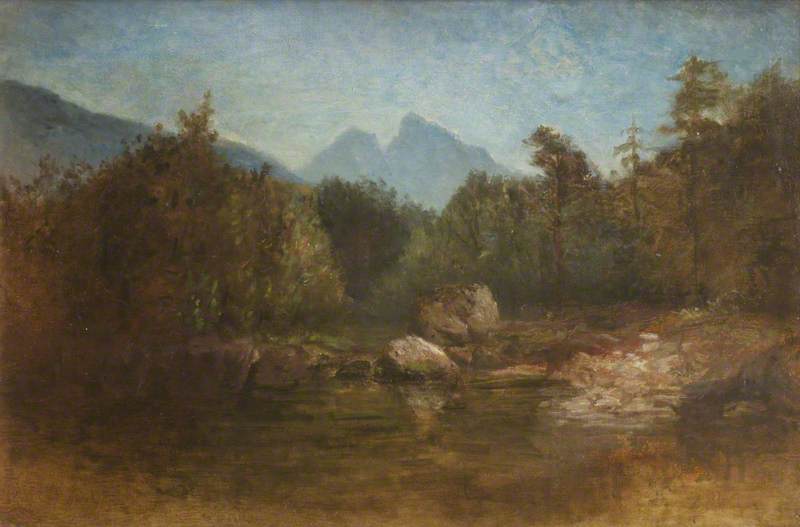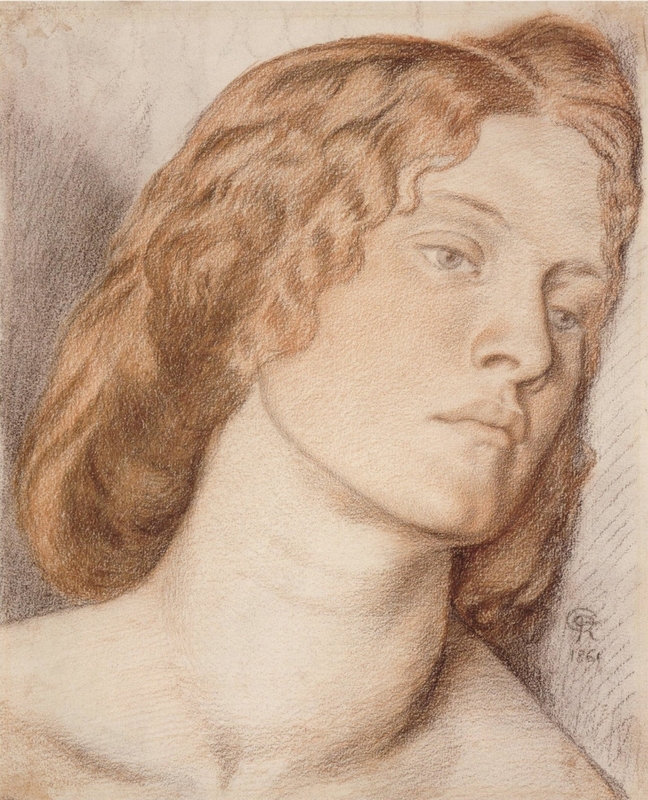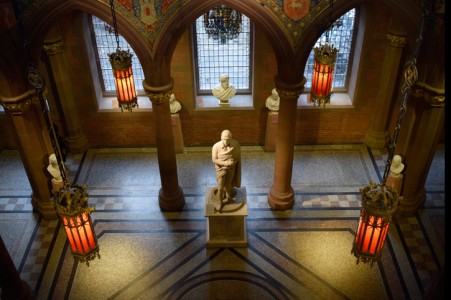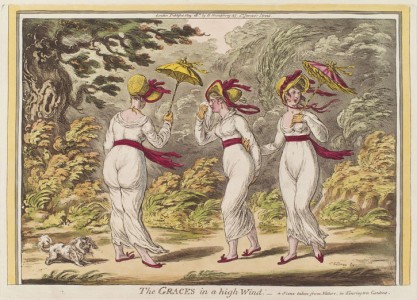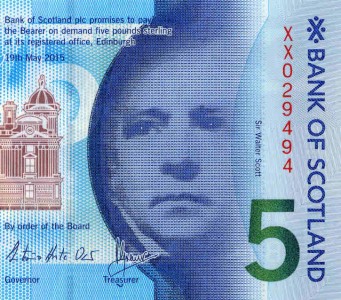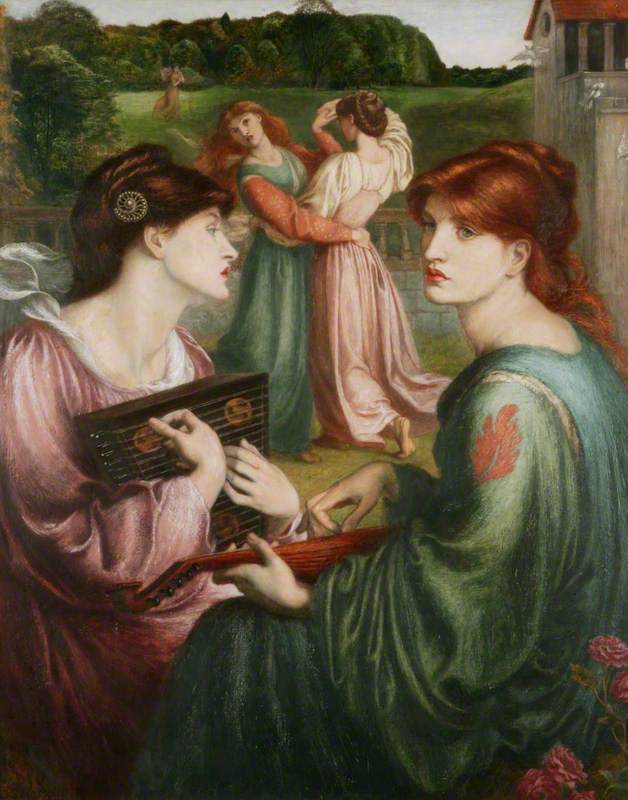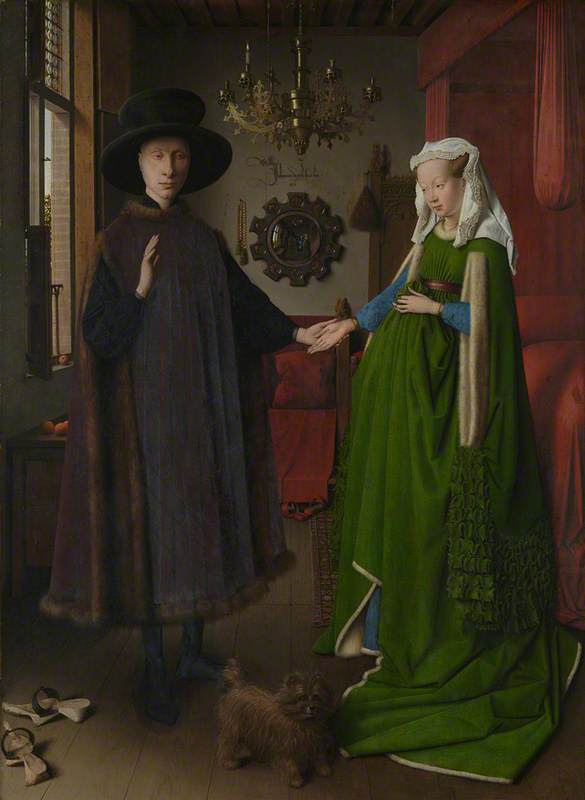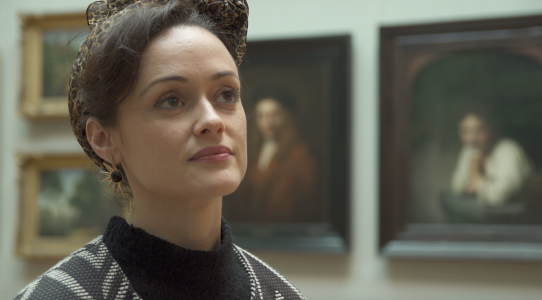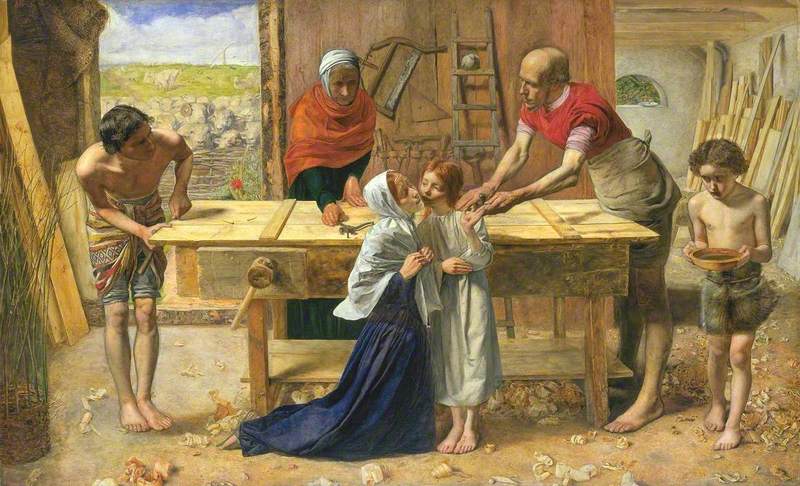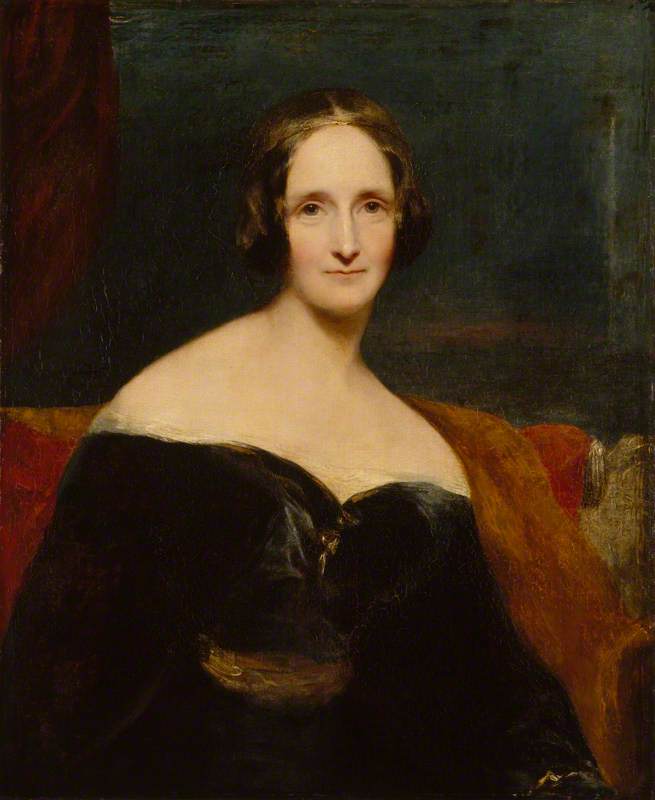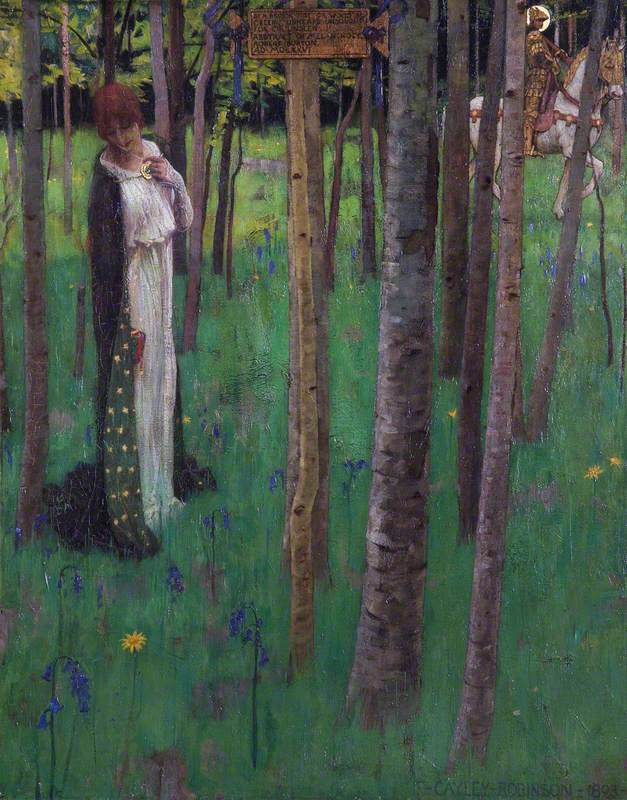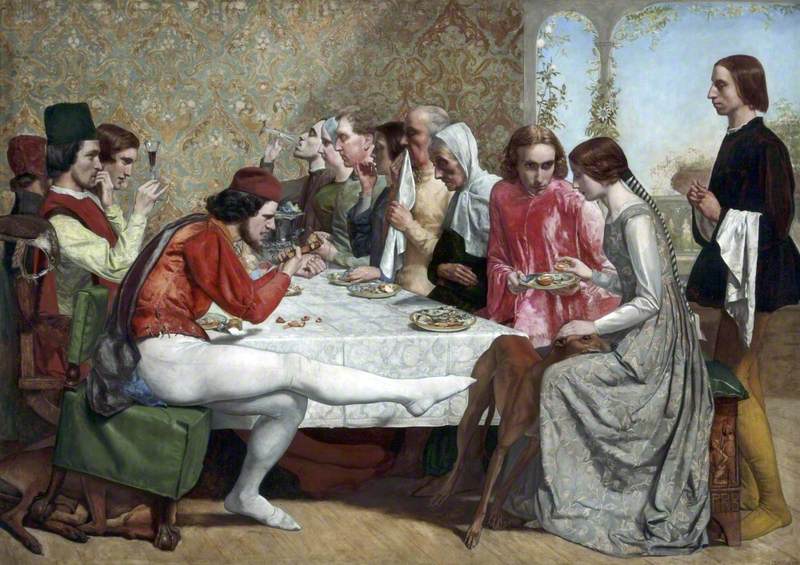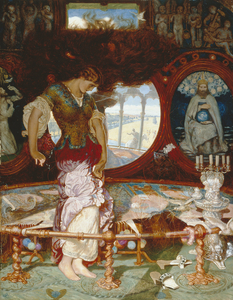Following his early death at the age of only 25, John Keats became one of the most influential poets of the nineteenth century, both for fellow poets and for artists. His quest for the ideal of poetic beauty led him to forge an original and powerful voice full of melancholy and a constant longing, which won him the adoration of his peers and of successive generations.
While many later poets acknowledged a debt to his poetic themes and form, and his reflections on the relationship between the real and ideal, his narrative poems – akin to Tennyson's later medieval poems – fuelled the imagination of a whole generation of artists.
John Keats
(copy after an original of c.1822 by Joseph Severn)
William Hilton (1786–1839) 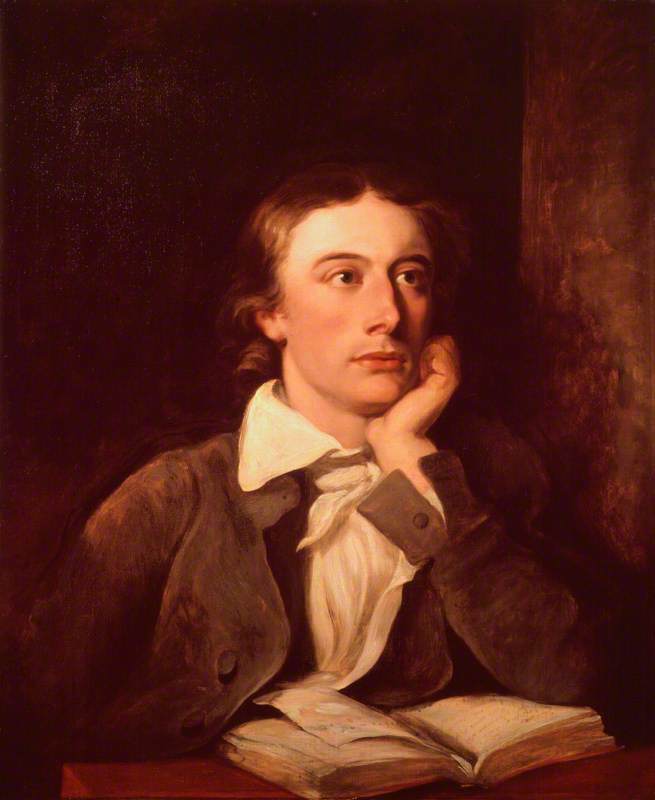
The Pre-Raphaelites in particular saw in him a kindred radical spirit and were moved by verses and his painterly poetic vision. Both William Holman Hunt and Arthur Hughes depicted scenes from his The Eve of Saint Agnes and similarly Endymion, Isabella or the Pot of Basil, Lamia and La belle dame sans merci inspired a number of works by the likes of John Everett Millais, John William Waterhouse, George Frederick Watts and Walter Crane.
The importance of friends and family
Keats had a strong bond with his two brothers, George and Tom, and his sister Fanny. Having lost their parents young, the four siblings maintained a deep affection and closeness that is evident in the letters. Friendship was also of immense importance and his letter-writing was its expression. In his letters the devoted correspondent, brother, lover and friend emerges, page after page.
His friends' devotion to him is evident in the many drawings and paintings they created of the poet. Among his friends' paintings, those by Joseph Severn occupy a special place. This is reflected in the fact that many copies of Severn's paintings of Keats exist, thus paying tribute to the artist who knew Keats intimately and nursed him during his last days.
The Graves of John Keats and Joseph Severn, Protestant Cemetery, Rome, Italy
1883
D. Sampson 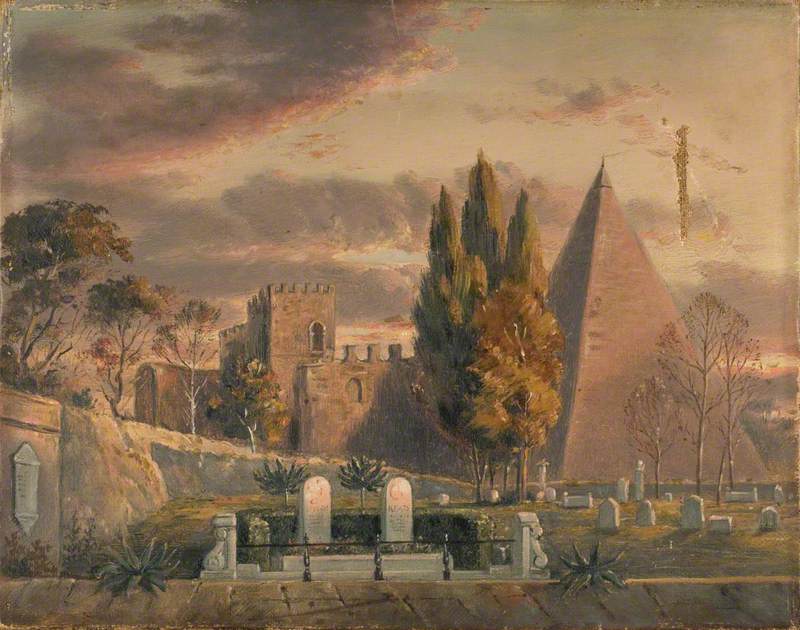
Ode to a Nightingale (1819)
The poem linked most closely to his friends and family is undoubtedly his Ode to a Nightingale, one of the best known and most popular of his works. Keats loved listening to birdsong and he is said to have been inspired to write this poem when hearing a nightingale in Hampstead. His friend Charles Brown relates how he sat under a plum tree in the garden of the house they shared to listen to the nightingale nearby.
In his painting, Keats' friend Joseph Severn romanticises the moment of inspiration by transferring the incident to Hampstead Heath.
Keats Listening to a Nightingale on Hampstead Heath
1845
Joseph Severn (1793–1879) 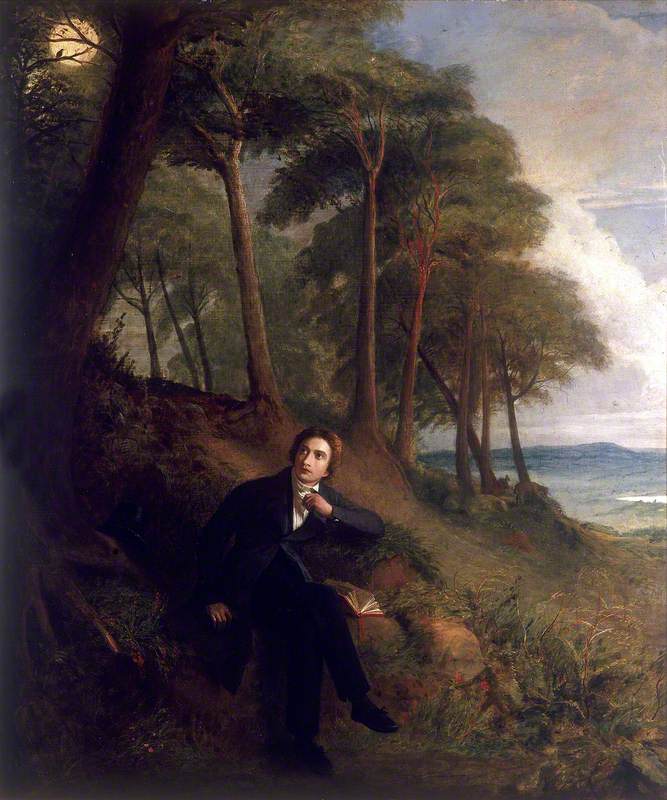
Keats was a student of Horace, Spenser and Dryden and they influenced the composition of his six odes, which are regarded as some of the finest short poems in the English language. The sadness that permeates the poem is due to the recent death of the poet's brother, Tom Keats.
In the midst of all the poems of Keats that inspired the Pre-Raphaelites, The Eve of Saint Agnes and La belle dame sans merci shine brightly.
The Eve of Saint Agnes (1819)
A romantic narrative poem again set in the Middle Ages, the story is based on the custom on Saint Agnes' Eve (20th January) for young women to perform a set ritual in order to foresee their future husband in a dream.
Madeline prepares to dream of her lover Porphyro, but he appears in the flesh. Porphyro is a sworn enemy of her family, but unlike Isabella and Lorenzo, in this tale, the lovers use the drunken revels to evade discovery and escape.
The implied consummation of their relationship was controversial and Richard Woodhouse, the legal and literary adviser to his publishers, Taylor and Hessey, suggested that it made the poem unsuitable for ladies and that it should be made less explicit, to which Keats replied he 'did not want ladies to read his poetry' – he wrote for men and women, not ladies and gentlemen.
His poems acknowledge the reality of female desire, making his women equal participants in his love poems. In a letter to his friend Benjamin Bailey (dated 18th March 1818), he writes of the need for mutual affection to make love real.
Keats started writing the poem in Chichester and it is believed that the city's medieval architecture inspired his depiction of the heroine's residence.
The Eve of Saint Agnes is written in 'Spenserian' nine-line stanzas with an ABABBCBCC rhyme scheme. Keats was introduced to Spenser when he borrowed a book of The Faerie Queene from his old schoolmaster, Mr John Clarke, and Charles Brown, the poet's close friend, subsequently commented on the influence of the Elizabethan poet on him.
John Everett Millais's Mariana, concerned with the theme of yearning, may indirectly relate to the poem The Eve of Saint Agnes.
La belle dame sans merci (1819)
La belle dame sans merci
exhibited 1902
Frank Bernard Dicksee (1853–1928) 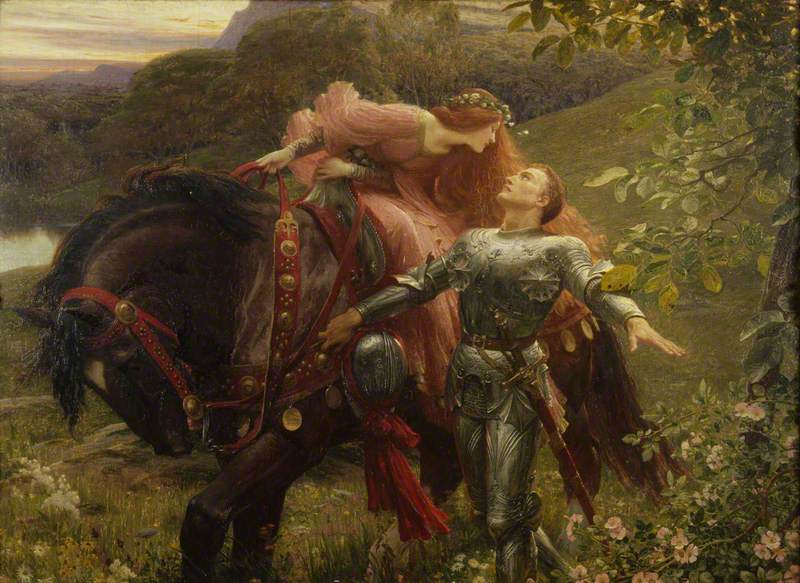
Keats uses the traditional ballad form to tell a tale of the unrequited love of a knight fatally attracted to an elfin lady. The story is based on a medieval poem of courtly love by the fifteenth-century French poet Alain Chartier, originally thought to have been translated by Chaucer. In fact, the earliest translation was by Sir Richard Ros, in around 1526.
Although Keats himself did not appear to take the poem too seriously, critics and biographers have written on it at length. The poem deals with Keats' preoccupation with love and death and in The White Goddess (1948), Robert Graves summed up the common interpretation by saying that the Belle Dame represented an amalgam of 'Love, Death by Consumption (the modem leprosy) and Poetry'. It proved highly popular with painters and illustrators.
Dr Eugenia Russell, musician, historian and publisher
Eugenia's book, Keats and the Pre-Raphaelites: a selection of poetry illustrated by Pre-Raphaelite artists and their successors, marks the bicentenary of the death of the poet
